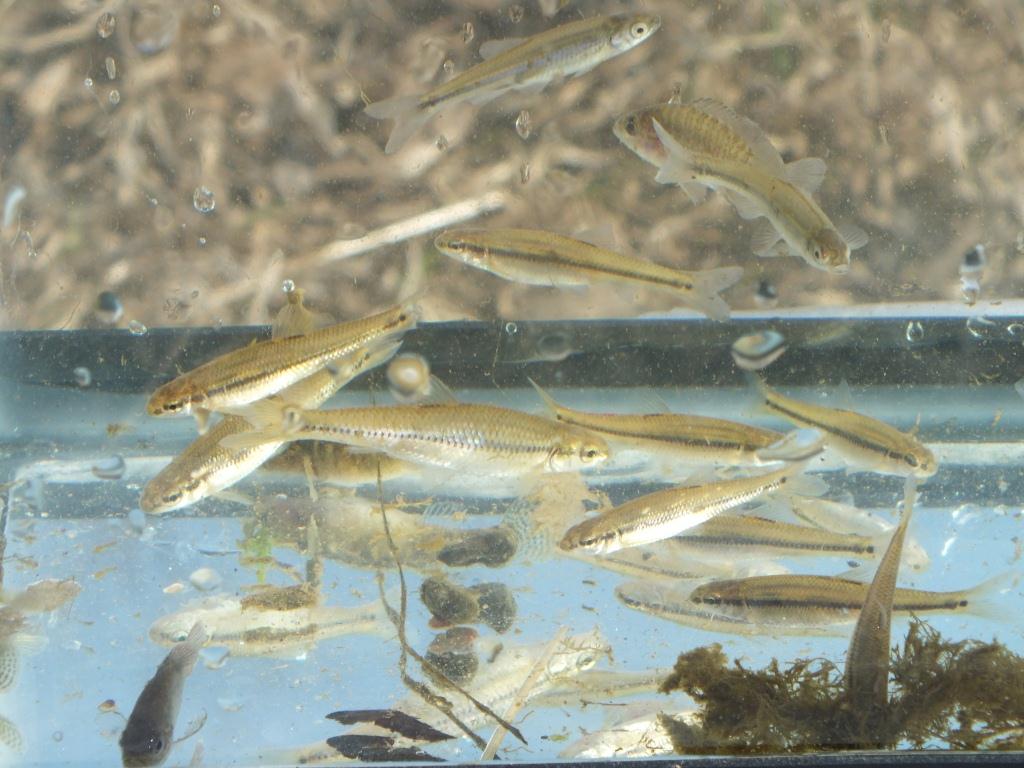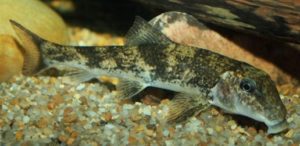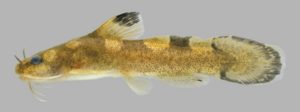
Fin-tastic Fish of The Parklands
If you’ve grown up in Kentucky with a fisherman in the family, you’ve undoubtedly heard tales about the common game fish found throughout the state.
Game fish like bass, trout, and catfish are often the highlight of many fishermen’s careers. Because of their size, taste, and the spirited fight that goes into catching them, these fish attract much attention from anglers and have been widely studied in fisheries research.
Fish populations in Floyds Fork and other waterways throughout the country, though, extend well beyond game fish! Rough fish—often, and unfortunately, called “trash fish” by some anglers—are a vital aspect of both the entire ecosystem and the well-being of game fish populations. Despite their harsh-sounding name, these fish can display a beauty that rivals even the most vibrant coral reef species.
![]()
Game vs. Rough Fish
The distinction between game fish and rough fish often leads to confusion. In general, game fish are captured for sport or harvest, while non-game fish (historically called “rough fish“) are not traditionally sought after for sport catching. Kentucky Department of Fish and Wildlife Resources does not currently impose statewide regulations on rough fish regarding size or creel. Although they receive less attention than game fish, rough fish make up a large portion of the state’s fish species, including suckers, minnows, darters, and many others.
The health of rough fish is closely tied to the health of the state’s prized game fish populations. Most notably, these fish fill valuable gaps within the aquatic food web. For instance, having a large, healthy population of minnows within a waterway ensures that juvenile bass have enough food to grow to trophy sizes. Additionally, many rough fish (such as suckers and freshwater drums) serve a critical role in the freshwater ecosystem by acting as hosts for the larvae of certain mussel species. Similar to the interaction between host plants and certain butterfly species, like the monarch butterfly-milkweed relationship, some mussels need specific fish species to successfully reproduce.

Examples of Rough Fish at The Parklands
The Parklands boasts an exceptional opportunity for fishermen and visitors to experience these fish up close. While game fish are often the focus of most fishing within the park, observing the beauty of rough fish can leave a lasting impact on young and old alike. Below are some of my favorites found throughout The Parklands.

Male breeding coloration of the rainbow darter
1. Rainbow darters (Etheostoma caeruleum)
These fish are a very abundant species found throughout the park. They prefer to spend their time hiding between the cracks of rocks in the riffles and runs of Floyds Fork. They forage the bottom of the waterway in search of small invertebrates such as insect larvae and snails. During their breeding season, March through late May, males can be observed with bright breeding coloration.
Rainbow darters are only one of the many darters found throughout The Parklands! Johnny darters and fantail darters are often found by students on field trips, but travelling to more remote areas of Floyds Fork may lead you to discovering more uncommon darter species.

A Northern hog sucker with its distinctive mouth and its square, bony head
2. Northern hog suckers (Hypentelium nigricans)
Northern hog suckers are well-camouflaged with brown mottled bodies that blend in with gravel streambeds. This can make them tricky to spot until they move, even though they can reach an impressive size of 8–15 inches!
The mouth of this fish is often the first thing students notice when they observe it. Its unique, sucking mouth is used to overturn rocks and dig through the substrate as the fish searches for aquatic insects and other foods. By stirring up the streambed while feeding, the fish also helps cycle nutrients and provides food for other aquatic life.

The brindled madtom grows to a maximum size of only 5 inches!
3. Madtoms (order Siluriformes)
While these fish may simply look like a juvenile catfish, they are actually their own species! The largest of the madtoms, the Stonecat, reaches a maximum size of 12 inches. Smaller madtom species, like Northern madtoms and brindled madtoms, can also be found throughout Floyds Fork. Their nocturnal, secretive lifestyle makes them relatively difficult to encounter. If you encounter this fish and attempt to handle it, be careful! They can release a mild venom through their pectoral and dorsal spines.
Fish-Friendly Practices
If you do go looking for some of these fish, there are a few important things to keep in mind. Firstly, they can be sensitive! These fish are small and are more susceptible to stress-related injuries. Only handle them when necessary. If you want to observe them closely, gently scoop them (along with some water) into a small plastic container, like the “terrariums” sold at pet stores. This allows you to look closely at them without handling them too much. Ensure that you release the fish after capture so that it can live a long and happy life after you’ve appreciated it!
Good creek etiquette is crucial to ensure that the populations of all these fish remain stable. Stacking rocks is especially harmful, as it takes away vital habitat from these fish, especially darters and madtoms. These rocks provide hiding spots from predators and even nesting sites where they can lay eggs and raise their young. Constructing dams is even more damaging—as it not only takes away hiding spots, but also heavily impedes movement throughout Floyds Fork. Keeping rocks where they are is a simple way to support our aquatic animals!
 Want to Learn More About Our Creek Companions?
Want to Learn More About Our Creek Companions?
Don’t Miss Junior Explorer: Fish Fest!
Join us at Beckley Creek Park on September 13, 2025, from 10am–2pm for Junior Explorer: Fish Fest! Learn more about the over 40 fish species that call The Parklands home, and get up close with our underwater neighbors.
Try your hand at rod-and-reel or net fishing, take a casting class, explore hands-on fishing stations with our rangers, and enjoy fish-themed crafts, games, and tasty treats. Cheer on minnows racing to the finish line, learn about local waterways, and enjoy fun activities for the whole family!
This FREE, family-friendly event is perfect for fish lovers of all ages.
Drop in anytime—no registration required—and explore the wonders of our streams with The Parklands Education Team, community partners, and special vendors. It’s going to be fin-tastic!
